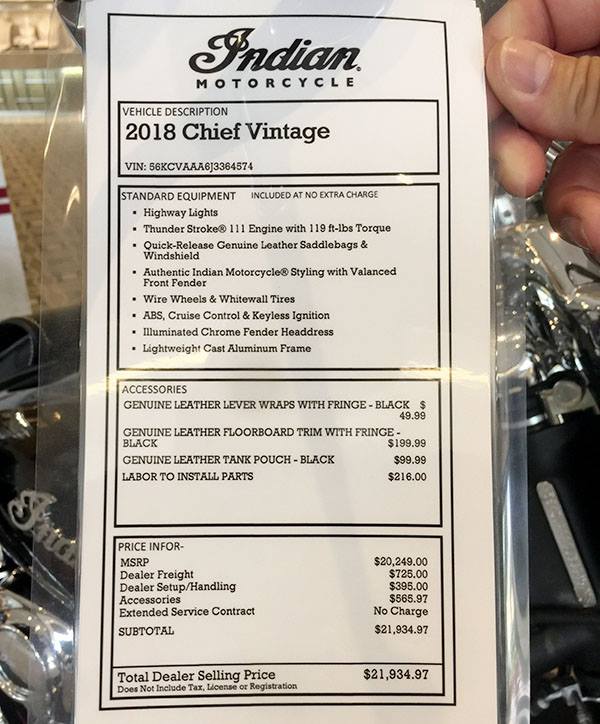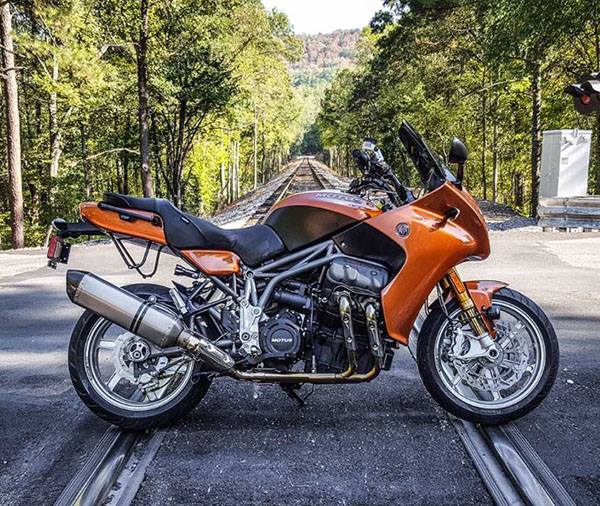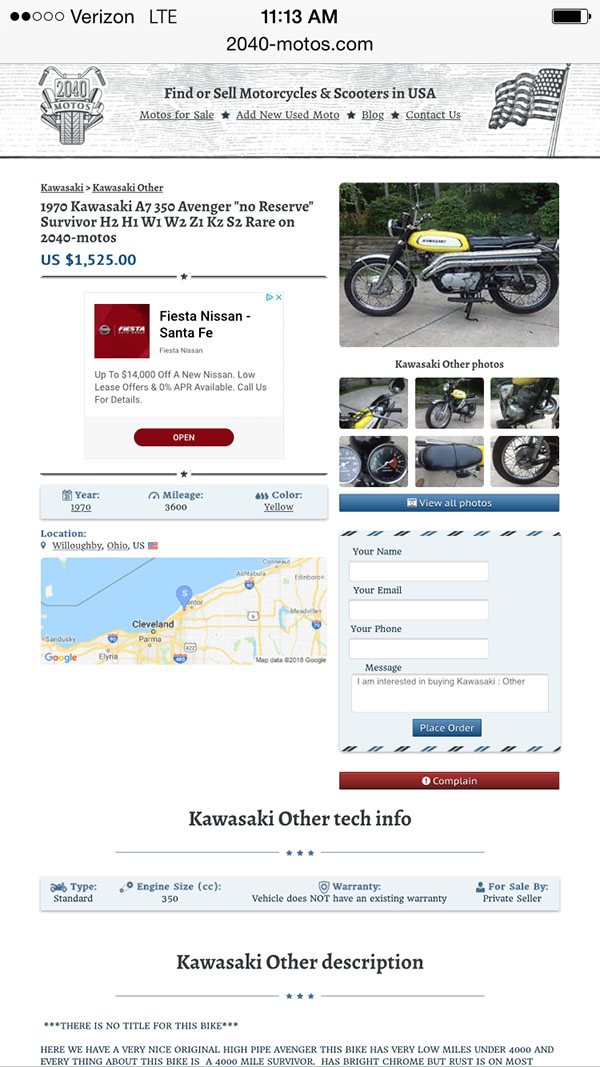
The ’69 Kawasaki Mach III 500cc two-stroke triple: Wow! It was a watershed wunderbike back in the days when the Big Four had serious engineering, the kind that went way beyond Bold New Graphics. They were trying all kinds of mechanically wild and wonderful things then. It was a magnificent time to start a motorcycle riding career.
Nicknamed the Widowmaker for its tendency to wobble and wheelie, the Mach III was the fastest motorcycle of its era, its MSRP was under $1000, and it would whomp a Honda CB750 in a drag race. I know because I was there. I had a Honda 750 and my college compadre Keith had the Kawi triple. I had a 50% displacement advantage and that extra cylinder, but it was to no avail. Keith cleaned my clock at every light.
Good buddy Gobi Gresh is all gaga on these bikes, so I guess that’s what induced my heightened sensitivity to the topic of all things two-stroke triple. Yesterday morning a note arrived in my email from Motorcycle Classics (the gold standard of motorcycle magazines, in my opinion), and it mentioned an article on a Mach III restoration by Anders Carlson. I sent it on to Arjiu knowing his perverted puttster predilections, he told me the story was really good, and I read it. I agree. I’ve never met Mr. Carlson, but let me tell you, the man can write.
Truth be told, I never wanted a Kawasaki Triple back then in any of the four flavors (I believe that as the line grew, they offered a 250, a 350, the original 500, and a 750 version). Now, maybe having one would be cool. I’d be a better man, I think, if I owned one.
I did my first international motorcycle ride ever with good buddy Keith back in the early ’70s. Keith rode his ferociously fast 500 triple and I rode my Honda 4 from central Jersey to Montreal. We were in high spirits, as might be expected. We were two young guys riding our bikes to Canada. Canada! It would almost be like going to another country! We were in engineering school back then, both of us were in Army ROTC, and it was a fun ride. We joked that folks might think we were draft dodgers, heading to Canada and all.
We swapped bikes for a while somewhere in Vermont and I thought the Kawasaki was downright painful. That bike could have been an enhanced interrogation tool before the term was invented. It felt like sitting a two-by-four plank. The 500 triple was fast in a digital sort of way (full on, or full off) and I didn’t care for it. My CB750 was a much more comfortable bike and it sounded the way I thought a motorcycle ought to. You know, like an Offenhauser. The Kawi sounded like a chain saw.
My buddy Peter had one of the Kawasaki 750 triples. I didn’t know him then, but he told me a story about that bike going into a high speed wobble coming down California’s Cajon Pass (the result being one pitched Peter with a broken shoulder that bothers him to this day). “I can’t tell you how many times I ran out of gas on that thing,” was his only other comment. I guess it liked fuel.
Still, the Kawi two-stroke triples are iconic bikes, and the Carlson article I mentioned above is a great read. If I was going to have a Kawi triple, it would be a white one with blue stripes (the original colors), just like Keith’s and the one you see in the photo above.


























 For me, the only knock on the A7 is that it may be too well made. I’m at the stage in my life where I don’t need a reliable motorcycle. New bikes are darn near perfect and perfection is boring. I search for the ever-elusive soul ride: Motorcycles that drip. The best motorcycles are the ones that leave you stranded; they turn any ride into a grand adventure. Besides, quirky flaws and secret handshakes appeal to my need to be special.
For me, the only knock on the A7 is that it may be too well made. I’m at the stage in my life where I don’t need a reliable motorcycle. New bikes are darn near perfect and perfection is boring. I search for the ever-elusive soul ride: Motorcycles that drip. The best motorcycles are the ones that leave you stranded; they turn any ride into a grand adventure. Besides, quirky flaws and secret handshakes appeal to my need to be special.